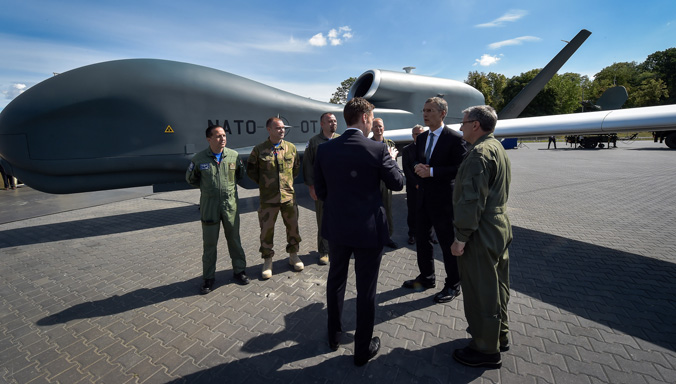NATO’s modern defence posture is based on an effective combination of two key pillars: cutting-edge weapons systems and platforms, and forces trained to work together seamlessly. As such, investing in the right capabilities is an essential part of investing in defence. NATO plays an important role in assessing what capabilities the Alliance needs; setting goals for national or collective development of capabilities; and facilitating national, multinational and collective capability development and innovation.

NATO Secretary General Jens Stoltenberg visiting the AGS Global Hawk display
Highlights
- The Strategic Concept identifies collective defence, crisis management and cooperative security as NATO’s core tasks. Deterrence based on an appropriate mix of nuclear, conventional and ballistic missile defence capabilities, remains a core element of NATO’s overall strategy.
- Allies have agreed to develop and maintain the full range of capabilities necessary to deter and defend against potential adversaries, using multinational approaches and innovative solutions where appropriate. The NATO Defence Planning Process (NDPP) is the primary means to identify and prioritise the capabilities required for full-spectrum operations, and to promote their development and delivery.
- Developing and procuring capabilities through multinational cooperation helps generate economies of scale, reduces costs, and delivers interoperability by design. NATO actively supports Allies in the identification, launch and implementation of multinational cooperation.
- To acquire vital capabilities, the Alliance must work closely with industry; build a stronger defence industry among Allies; foster greater industrial and technological cooperation across the Atlantic and within Europe; and maintain a robust industrial base throughout Europe and North America.
